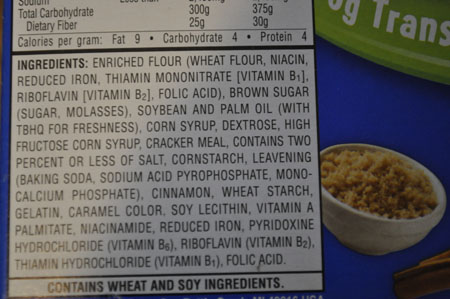The Dangers of High Fructose Corn Syrup
 Everywhere I go, I see overweight children. I think it’s disgusting. Personally, I don’t think there is any reason that a 5 year old should weigh anywhere near 100 lbs. I understand that there are some children that have health problems causing them to be large, just as I understand that too many parents let their children eat whatever they want, whenever they want.
Everywhere I go, I see overweight children. I think it’s disgusting. Personally, I don’t think there is any reason that a 5 year old should weigh anywhere near 100 lbs. I understand that there are some children that have health problems causing them to be large, just as I understand that too many parents let their children eat whatever they want, whenever they want.
However, the things our children eat and drink are factors. Too many of the products geared towards children are sweetened with High Fructose Corn Syrup…and HFCS is a huge contributing factor to our nation’s obesity problem.
There has been so much controversy about High Fructose Corn Syrup, or HFCS for short. It’s bad for you, we were told…then we are told that “they” are wrong, and it is good for you. Think about the source of the information. The same people that are telling us it’s good for us are the same people that are trying to make a buck.
As a mom, I want to know the facts about what my kids are eating. So, I did some research into some myths floating around about High Fructose Corn Syrup. Here’s what I found out.
The Myth: High Fructose Corn Syrup is all natural. The truth is, it’s not. I’m sure all of us have eaten corn; it’s not sugar sweet. Scientists figured out how to extract glucose from plants and chemically turn it into fructose, which is very sweet. This artificial fructose is then mixed with corn syrup; voila! High Fructose Corn Syrup. In my opinion, the word “natural” means it comes directly from nature; it would exist whether humans were here or not. High Fructose Corn Syrup definitely does not fall into the “natural” category.
The Myth: Our health is being sacrificed for profit and convenience. This is very true. High Fructose Corn Syrup is cheaper than white sugar; this is the main reason that its use by food manufacturers rose so rapidly in the 1990s. Consumer’s health wasn’t a factor; saving money and making more profits was.
HFCS is convenient because it dissolves easier in liquids. Look at the labels on those sodas you and your children are drinking; look at the labels on those juice boxes that claim to be healthy for children. HFCS is in most, if not all, of them.
The Myth: Mercury has been found in High Fructose Corn Syrup. Yes, it’s true! In research studies, Mercury was found in close to half of the samples that were tested. Mercury is a toxic substance that can cause brain damage and kidney damage. Mercury ingested by a pregnant woman can cause brain damage, mental retardation, seizures, blindness and muteness in the baby. Tell me how this is good for you!
The Myth: High Fructose Corn Syrup contributes to obesity. This is true. I’m going to try to explain this without getting too overly technical.
Two substances in our bodies control our food intake: insulin and leptin. It’s a scientific fact that people who have low leptin levels are obese. Insulin increases leptin levels; leptin is what controls the amount of food we eat. HFCS reduces the amount of both insulin and leptin in our bodies, causing us to eat more, and therefore gain weight.
Our bodies do not metabolize HFCS in the same way as sugar (glucose). Glucose is let into the brain, while fructose is not. This is significant for our metabolisms because sugar sends signals to our brain that say “We’re full, you can stop eating now!” while HFCS does not send any messages to your brain.
Aside from the chemical aspects of how HFCS contributes to obesity, the timelines agree. HFCS was introduced in the food industry in the 70’s, and by the year 2000 had replaced sugar in more than 40% of sweetened food products. Soon after this, we began to see an increase in our country’s levels of obesity.
Sources:
The American Journal of Clinical Nutrition
Department of Health and Human Services
?

[…] is causing the rise in childhood obesity and diabetes? One cause is the increased use of High Fructose Corn Syrup, another is the use of refined sugars in most of our food. For now, we are going to discuss how the […]
I was born a baker, with an insatiable sweet tooth. I know betetr now. I continue to study about unhealthy sugars and fats so I can bake BETTER, and give people evidence that healthy treats (without unhealthy sugars/fats and highly-processed flours) can be delicious. That evidence opens up pathways for gentle (unforced) education on sugars and fats. I am sure I will learn a lot from your blog. Wondering if I could ask you some questions about Glycemic Index, and cancer-fighting superfoods ? Thank you! Lisa Cooper
Mercury? That’s an alarming statement.
Just HOW MUCH mercury is in HFCS?
Like, what percentage?
What level of mercury is lethal?